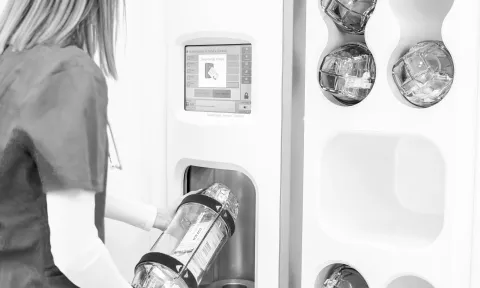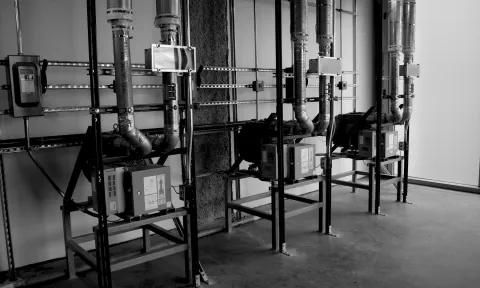The Pandemic Effect Lingers
Though the COVID-19 began nearly a half-decade ago, its economic effects continue to linger as inflation – driven in large part by market uncertainties, disruption in supply chains, and tight labor pools – puts pressure on both businesses and consumers worldwide. However, healthcare institutions are uniquely challenged as they must maintain profitability, adapt to shifts in labor markets, and meet increasing demand all while continuing to provide safe, high-quality care to patients.
This has many hospital and healthcare leaders seeking novel operational strategies including but not limited to the following five initiatives:
1. Supply Chain Optimization
Recent history illuminates vulnerabilities in healthcare supply chains. The resulting effects can significantly raise the cost of healthcare essentials like medications, medical equipment, and personal protective equipment (PPE). To combat this, forward-thinking healthcare facilities can optimize their supply chain management, both internally and externally.
Key Tactics:
- Leverage Economies of Scale: If properly organized and equipped with operational technology that can help manage, secure, and distribute medication, healthcare facilities can take advantage of bulk purchasing – dramatically reducing the cost per unit.
- Standardize Supplies and Equipment: Standardizing the brands and types of supplies used across departments can limit variability and increase purchasing power.
- Increase Internal Supply Chain Efficiency: Pneumatic tube systems act as the super highways of the hospital and connect internal supply chains. In our blog “Defining Fast Inside Hospital Walls” TransLogic engineering data shows that pneumatic tube systems can move material 5x faster than a human courier.
Considering many large hospitals may make thousands of transactions per day, upgrading the pneumatic tube system with new-tube-technology like RFID tracking, multiple-carrier-send stations, and dedicated routes, means this can be a great way to amplify internal cost savings.
2. Invest in Technology and Automation
Investing in automations, including pharmacy automation, can play a significant role in reducing operational costs, enhancing efficiency, and improving employee morale. By automating repetitive tasks, healthcare institutions can be more flexible in staffing while allowing employees to engage in more meaningful work. Furthermore, investment in automation technology can reduce the amount of waste, increase overall productivity, improve security, and help reduce medication administration errors – which affects 1.5 million people each year.
Key Tactics:
- Pharmacy Automation: The hospital pharmacy manages tens-of-thousands of medications at any given point, making it a prime candidate for automation technology. In one study, cited in the National Library of Medicine, pharmacists were able to save over 46 minutes per 100 prescription fills by using robotic dispensing systems. Then there’s the task of inventory management, medication tracking, and medication administration.
- Consider Where You Can Use AI: The healthcare industry will undeniably be impacted by artificial intelligence. Our blog “5 Areas Where AI Could Impact Hospital Operations” explores this notion more in depth, but many areas of the hospital stand to benefit from the technology. These areas include administration and scheduling, medical image processing, and better facilities maintenance.
- Telemedicine and Remote Monitoring: The rise of telemedicine and remote patient monitoring can help healthcare providers administer care without physical office space or large staff teams. Virtual visits also reduce transportation costs for patients, making healthcare more accessible.
3. Enhance Workforce Efficiency and Flexibility
Labor costs can make up a significant amount of operational expenditure, and they often grow with inflation. To combat this, healthcare organizations need to focus on optimizing their workforce efficiency and creating more flexibility.
Key Tactics:
- Cross-Training Staff: Cross-training healthcare facilities staff to adapt to varying patient volumes can reduce the need to hire additional staff. For example, nurses and medical assistants can be trained to provide care in different areas of the hospital, ensuring more flexible deployment in times of need.
- Adopt Flexible Scheduling: Staffing models, such as per-diem or part-time shifts, can help reduce overtime costs and ensure that staffing levels are consistent with patient demand. Flexible scheduling options may also help retain staff in highly competitive labor markets, reducing turnover-related costs.
4. Experiment With Value-Based Care Models
In response to rising costs, many healthcare organizations are experimenting with value-based care models. Value-based care focuses on patient outcomes rather than the volume of services provided, which can help reduce overall healthcare costs for facilities while improving patient care.
Key Tactics:
- Accountable Care Organizations (ACOs): Participating in ACOs allows healthcare providers to work collaboratively with other organizations to improve care coordination and reduce unnecessary services. ACOs typically share savings from cost reductions, which can provide financial incentives for keeping costs low.
- Capitated Payment Models: In capitated payment models, healthcare providers receive a set fee per patient rather than being reimbursed for each service provided. This incentivizes providers to focus on efficiency and high-quality care as opposed to volume of care.
5. Practice Energy-Efficient Practices
Energy costs are a significant line item in healthcare facility expenses. The average hospital energy cost can be upwards of $70,000 monthly, and demand for energy is poised to rise. Implementing energy-efficient practices and investing in green technologies can help reduce operational costs and lessen the overall impact of future energy price hikes.
Key Tactics:
- Invest in Energy-Efficient Equipment: Upgrading to high efficiency HVAC systems, LED lighting, and newer medical equipment can reduce energy consumption over a long period of time.
- Consider Smart Building Technologies: Smart building technologies, like automated lighting, smart temperature control, and energy monitoring systems, can help reduce unnecessary energy consumption while illuminating areas of improvement.
- Use Renewable Energy Sources: Many healthcare organizations are exploring renewable energy sources, more specifically solar power, to reduce their reliance on traditional energy sources. Installing solar panels can provide long-term energy cost savings, help organizations meet sustainability goals, and may become a profit center for the organization.
Inflation Is Inevitable
Inflation in healthcare operations presents a complex challenge, but it can be effectively addressed through a combination of supply chain optimization, technology investments, workforce management, and energy-efficient practices. Through these strategies, healthcare organizations can help combat the financial impact of inflation while continuing to deliver high-quality patient care. These proactive measures ensure that hospitals remain resilient and adaptable in an ever-changing healthcare landscape.
















